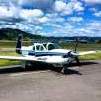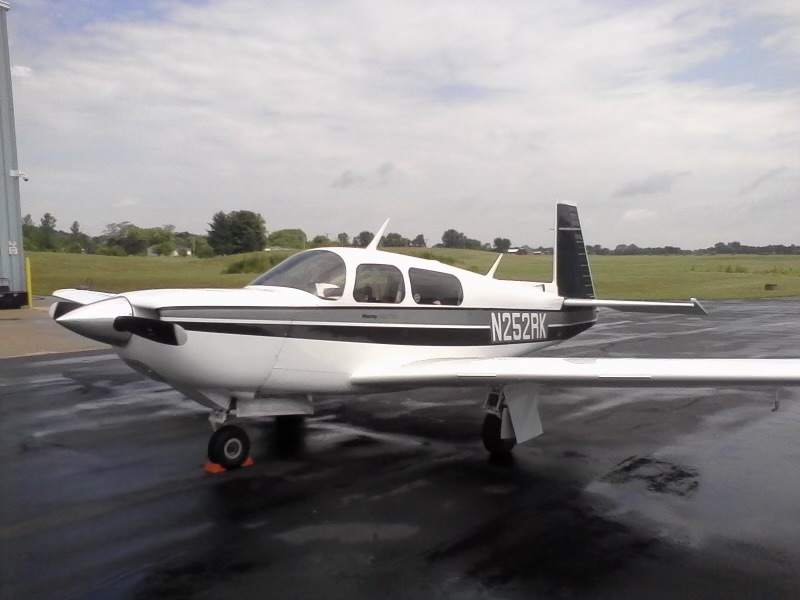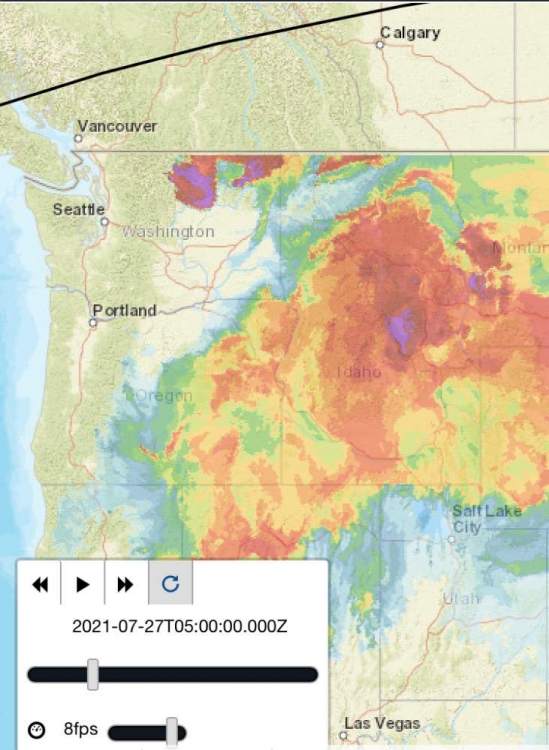-
Posts
5,466 -
Joined
-
Last visited
-
Days Won
25
Content Type
Profiles
Forums
Blogs
Gallery
Downloads
Media Demo
Events
Everything posted by Ragsf15e
-

Pressure transducer fitting size? 78J
Ragsf15e replied to Jocbay's topic in Modern Mooney Discussion
Mine were also the same size. Interesting. All the transducers are the same size, so if they start out different coming out of the fuel servo / engine, there must be an adapter to get them to the same size line somewhere. -

Pressure transducer fitting size? 78J
Ragsf15e replied to Jocbay's topic in Modern Mooney Discussion
Yes, that’s much better than having them placed randomly around the engine with clamps. -

Pressure transducer fitting size? 78J
Ragsf15e replied to Jocbay's topic in Modern Mooney Discussion
You must have different ones than my edm 930. I have the magic $400 i2s transducers that use the flare fitting. Maybe you have the vdo transducers? -

Pressure transducer fitting size? 78J
Ragsf15e replied to Jocbay's topic in Modern Mooney Discussion
The jpi install manual recommends not installing them directly to the engine itself. Both you and Doc are right as the engine connection point is 1/8” npt. That typically connects to mil spec hoses using the 3/16” JIC flare pipe fittings. The transducers jpi used also have a flare fitting. I know this because the snubbers that jpi recommend have the npt threads (no flare) and you either have to install them directly into the engine npt fitting or have appropriate adapters. I recently bought a bunch of female/male npt / jic adapters and put snubbers on both oil and manifold pressure. Smoothed everything out real nice. -
Edit: I must have been sleep deprived to miss your humor. I’m sorry! Interesting, why do you think it reads low? I’ve done lots of speed testing over the 6 years I’ve had my plane. I use the 3 way gps method and plug in the numbers after landing. Usually while I do it I use the 430w to give me an estimate. As long as I use CAS instead of IAS, my 430w has always been within a knot of my calculations. Are your temp and airspeed indicators accurate?
-
Have you read the STC language closely to see exactly what it says about the engine? Another option is to call Maxwell or Top Gun or another msc and discuss. I’m sure they’ve dealt with it.
-
If tas reads high, we’d all say it matches pretty well!!!
-

IFR panel with single GPS/nav radio
Ragsf15e replied to dominikos's topic in Avionics/Panel Discussion
Also, I doubt anyone considers the vfr backup gps as an ifr backup. At least they shouldn’t. If you lose your gps on an ifr flight it’s not a big deal. Tell atc, navigate via vectors or vors. Land via ils or visual approach, get gps fixed. They just don’t break that much and it’s not catastrophic when they do. Convenience is the real benefit to gps nav and approaches. They get you anywhere and easier, but it shouldn’t cause significant issues if it were to break. -

IFR panel with single GPS/nav radio
Ragsf15e replied to dominikos's topic in Avionics/Panel Discussion
No need for a backup gps. it is nice to have a backup approach capability though, so a #2 nav/com fulfills that (ils/vor). -
Surefly is approved for TC’d engines, but it must be set on fixed timing. Check the AML for specifics. On 28v systems there have been some hiccups. They are currently addressed with a power conditioner installed with the SF. In the future they will be part of the unit. On 28v, I’d probably wait for that. Especially if you’re limited to fixed timing. On 14v NA engines, I think it is a worthy change when you are at mag overhaul anyway.
-
Yeah the forecasts aren’t good for allowing for smoke but the metars tell the story.
-
No doubt. After my 1/2nm vis adventure last year the airplane just looked grey. Gross. I had to clean it for hours. A little soot behind every rivet. Strangely the oil analysis was normal but I hate to think about the engine breathing that too (and the pax)!
-
Honestly I don’t know, but it looks bad. Most of the smoke is blowing east. I use this site for visualization of where it’s going but it doesn’t give you altitudes. https://hwp-viz.gsd.esrl.noaa.gov/smoke/index.html# this is a shot from that site…
-
None noticeable last year, but the smell and breathing of straight smoke was terrible. Definitely try to avoid flying through the thick stuff!
-
Thanks, that’s very helpful. Your route is further west than mine by about 80 miles, so I think your conditions were probably even better on the west side of the fires. I’m going to hold off for a couple weeks and see if it gets any better.
-

Fastest M20F ever....
Ragsf15e replied to blaine beaven's topic in Mooney Safety & Accident Discussion
I didn’t find it hard to believe either. Damage from overloading the airplane (speed or Gs) doesn’t happen exactly at the published limits. I don’t see the airplane coming apart 1 kt or 0.1 G over the limits, but at some point damage starts to happen. Maybe invisible at first, but increasing with continued stress until things become noticeable like the popped rivets and leaking fuel. In the F-15E (yes, it’s designed a little differently but the same principle), we had had Level 1-5 for Over Gs. Level 1 just requires an inflight battle damage check by your wingman, then continue. Level 3 might require declaring an emergency and an exterior maintenance inspection. Level 5 requires all of the above plus the pilot buying the crew chief a case of beer and helping him remove every single inspection panel on the airplane. I think the guy did great by somehow not pulling 8 Gs when he saw the ground coming up through the haze. That might have initiated uncontrolled disassembly. -
Out west there are places with 1/2 nm vis on the ground and lots of areas with less than 3nm flight vis at 10,000’, but forecasting where the flight vis (and ingesting soot/smoke) is bad doesn’t really happen. There aren’t any clouds, it’s just vis reduced due to smoke. I’d love to see a weather product where I could select altitudes and see vis forecast ALOFT over a large area.
-
And the passengers!
-
Yeah that’s another problem. They don’t forecast the vis effects of smoke very well on the taf. I landed in 1/2 vis last year at home in skc. Not good. Ifr mea is so high that I won’t go if it’s ifr. I’m mostly worried about the smoke aloft enroute. I couldn’t get above it last year and it was miserable. Like being inside a bbq smoker.
-
The “smoke season” out west is putting a serious crimp in my summer flying plans. I live in Spokane, WA and we’re surrounded by fires (and tfrs), but the air quality has stayed ok. Flights to the coast have been ok because there aren’t many fires that way. I’d really like to get down to Carson City NV to see my parents, but there are huge smoke plumes filling up northern Nevada and southern Oregon coming from several fires. Ive used the ground air quality numbers and the noaa high resolution smoke forecast but I really want know the flight conditions at like 10,500’. Last year I flew through some terrible, 1/2nm vis type smoke and don’t want to repeat that. Has anyone crossed the northern sierras around 11,500’ or do you guys have another way to tell how high that smoke goes? I did call flight service and they were like tits on a boar… Thanks!
-

Voltage light on steady with master switch on
Ragsf15e replied to JWJR's topic in Vintage Mooneys (pre-J models)
Zef has a good troubleshooting guide on their website. It’s specific to the vr model. I’d try that first. An hour with a digital voltage meter and the troubleshooting guide should narrow down the problem quickly. -

Garmin GFC 500 AP for C, D, E Mooneys
Ragsf15e replied to Greg Ellis's topic in Vintage Mooneys (pre-J models)
Ha! Calling it an “investment” is your first mistake! -
Nope, I totally agree. Solid solution! I have a GTX345 in mine because there wasn’t a tailbeacon/wingtip available when I got it. If he was redoing the whole panel, I’d recommend a panel mounted solution so he could get weather and traffic on his big fancy screen or in his audio panel, but an iPad mounted with a ram ball mount on the panel is just as good if there’s not a full avionics installation happening.
-
Cheapest way might be wingtip or tailbeacon for out, sentry or stratus + iPad for in. That configuration works well for a lot of people and is minimal labor. You can possibly do it yourself and just get a signoff on the tailbeacon. No work behind your panel. That’s a UAT solution, so US only below 18,000’. Possibly allowed in bahamas, Mexico, Canada, but you’ll have to research it. Another option is lynx 9000 transponder or GTX345. Those both do in/out but at more than double the price plus installation. If the UAT limits are ok with you, I’d definitely do the tailbeacon.
-

Fastest M20F ever....
Ragsf15e replied to blaine beaven's topic in Mooney Safety & Accident Discussion
I don’t know, but generally faults within the system cause a disconnect to force the pilot to recognize and fix the problem. Especially with ahrs realign, I seriously doubt autopilot would work. Now if the gi275s were properly configured and the second ahrs was ok, then it might, but no guarantees. I fly a pa46t with g1000 and 2 ahrs. Yeah it’s a different system, but if 1 ahrs fails, the autopilot disconnects and cannot be engaged until the fault is cleared up.





